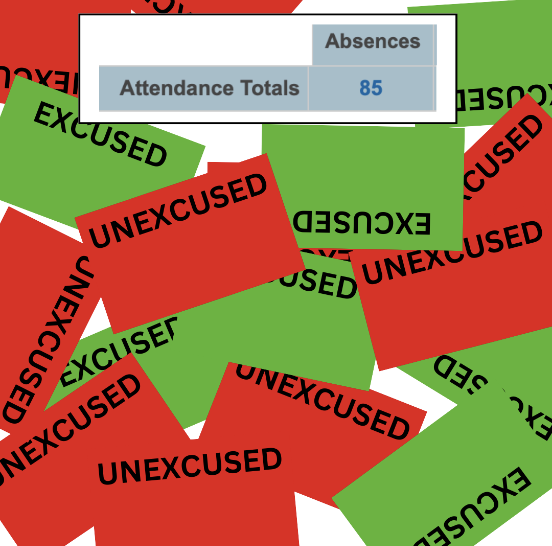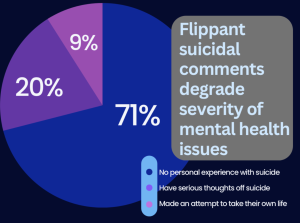Excused absences shouldn’t count towards loss of credit

Attendance policies at Staples cause unnecessary difficulty and stress for students. Whether unexcused or excused, any absence counts towards a loss of credit.
At the beginning of this school year, I came down with an aggressive virus that kept me out of school for almost two weeks. Then I got sick again. Then I missed more time for a family funeral. Then I needed additional time to recover both physically and mentally. By the end of the first marking period, I had racked up nearly 60 class absences total; all of them were excused, of course.
Students are only allowed 20 absences for a full-year course before it counts towards a loss of credit. This includes both unexcused and excused absences. Being that we had only just finished our second month of school, you can probably imagine how worried I was.
So my question is: What’s the point in having unexcused and excused absences if they’re both going to count towards loss of credit? If I’m sick or I have a doctor’s appointment in the morning, my mom or dad has to call in or write a note stating my name, my grade, the reason for my absence or lateness for it to count as “excused.” Only then can I walk with my head high into class with that little green slip of paper with “EXCUSED” in bold at the top. (There’s nothing more shameful than walking in with a red late pass). But besides the temporary embarrassment that these attendance policy fulfillments save me from, what is the purpose?
Though it is not explicitly stated in the Student Handbook, apparently the distinction between the two types of absences allows for students to receive additional time to make up the work they missed and not have any assignments marked as a zero (this I know only from experience as a student at Staples, but rarely has the school taken the time to clearly and directly inform students of these attendance rules, until it’s too late). Unexcused or excused, however, in my nearly four years at Staples I’ve found that an extra day doesn’t mean squat when all of your makeup assignments and assessments are simply piled on top of tomorrow’s work.
According to the Staples High School Student Handbook, absences that count as excused include “student illness, death or critical illness in the family, response to a legal process, medical appointment (which cannot be scheduled outside of the school day), college visit beyond two (juniors and seniors only)” and several other instances. Any absence that does not align with any of the excused absences is considered unexcused.
Perhaps, I can see its advantages in how it might compel students to miss school only when they have to. But this lose-lose situation can also cause people who do have good reason to stay home from school to attend anyways—fearing the loss of credit.
This is especially concerning when an ill student is contagious and still goes to school, which—coming from a Senior at Staples—is rather common. It’s not fair to the student—who must sacrifice time to recover and take care of themself and instead endure an entire almost 7-hour school day whilst in their sickly condition; And it’s not fair nor is it safe for the rest of the student body and staff.
Though students who have accumulated more than the allowed number of absences have the right to appeal to have credit reinstated, it seems impractical to have to go through a process—one that requires four teachers and one administrator present.
In a school community that is plagued with constant stress and anxiety, the added stressor of such ambiguous attendance policies and “excused” and “unexcused” labels are just another unnecessary contributor to the fear-backed obsession over numbers and letters that dominates Staples hallways.

Broadcast Director Anna Diorio ’23 entered Staples deeply hoping to become a part of something in the school community. Inklings proved to be a place...



















































